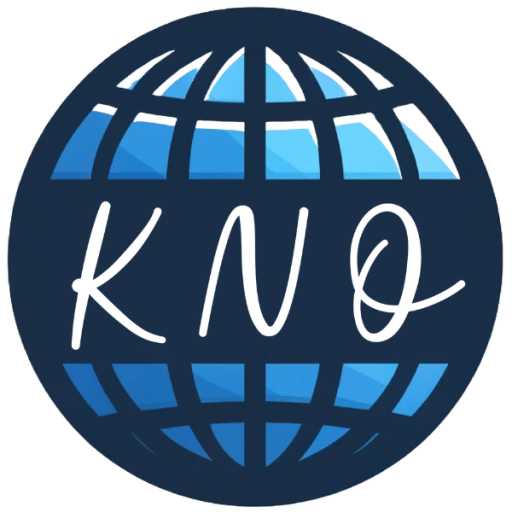Rapid Content Creation to Build Momentum
Launching a business, campaign, or product doesn’t have to be a long, drawn-out process. In fact, speed and efficiency can often lead to some of the best results. In years past, traditional marketing involved extensive research, planning, and a long rollout. But in today’s fast-paced digital landscape, waiting months to launch a campaign can mean missed opportunities and stagnant growth. Rapid content creation and marketing isn’t about cutting corners or sacrificing quality.
Imagine that you develop and launch a complete content marketing campaign in just seven days, and then, riding that momentum, you turn around and create a product ready to go live in just 48 hours. It sounds ambitious, but it’s absolutely doable with the right strategies.
This guide walks you through both processes. First, I share how to create a content marketing campaign in a week. Then, I share how to take an idea and transform it into a launched product in just two days. Together, these steps form a powerful blueprint for building engagement, driving conversions, and making big moves in your business.
By the end of 7 days, you’ll have a live campaign driving engagement, traffic, and conversions. And after another two days, you’ll create a viable product quickly and effectively.
Let’s dig into the 7-day content marketing sprint first, and then we’ll transition to the 48-hour product development plan.
If launching a business, campaign, or product feels like a marathon, let me introduce you to the sprint. Long, drawn-out launches are a thing of the past. These days, moving fast isn’t just trendy, it’s practical. The internet doesn’t wait, and your audience isn’t hanging around for a six-month marketing rollout. You’ve got to catch their attention while it’s fresh and take action while your energy’s high.
Now, this doesn’t mean throwing something half-baked out into the world. It means being smart about your time, working efficiently, and focusing on what actually matters.
So, here’s what we’re doing: first, I’ll walk you through how to create a full content marketing campaign in seven days. Yep, seven. Then, while you’re riding the momentum of that campaign, we’ll head straight into a 48-hour product launch plan. By the time you’re done, you’ll have both a live campaign and a real product to offer your audience. Sounds like a lot, right? Trust me—it’s not just doable, it’s a breakthrough.
Here’s the plan:
Day 1: Define Your Campaign Goals and Target Audience
The first day is all about clarity. Start by identifying your campaign’s primary objective. Is it to generate leads? Build brand awareness? Increase sales? Your goal will determine your content’s direction and format, so be specific.
Once you know what you want to achieve, outline the key performance indicators (KPIs) you’ll use to measure success. These could be lead signups, website traffic, social media engagement, or direct sales.
Next, narrow down your target audience. Who is this campaign for? Define your ideal customer’s demographics, interests, and pain points. The more specific you are, the better you can tailor your content. Knowing your audience ensures your messaging resonates and encourages action.
Action Steps for Day 1:
- Define your main goal and KPIs.
- Outline your target audience, including demographics, interests, and pain points.
Day 2: Research and Choose Content Formats for Rapid Content Creation
On the second day, focus on choosing the best content formats to achieve your campaign goals. Consider what formats will resonate with your audience and be most effective for delivering your message.
Blog posts, videos, social media posts, email newsletters, and infographics are all options. The format you choose should align with both your audience’s preferences and your own resources.
Research trending topics in your industry or look at competitors for inspiration. Identify content gaps that your campaign can fill. Also, think about how your content will serve different stages of the buyer’s journey—awareness, consideration, and decision. This ensures you reach potential customers at the right time with the right message.
Action Steps for Day 2:
- Select content formats that suit your audience and campaign goals.
- Research current trends and competitive content for inspiration.
Day 3: Create a Content Plan and Outline
Now that you’ve chosen your content formats, it’s time to plan the specific pieces of content for your rapid content creation campaign. Whether it’s blog posts, videos, or social media updates, outline each piece in detail.
Decide how many pieces of content you’ll need and what topics each will cover. If you’re creating a blog series, map out each post’s key points. If it’s a video campaign, write a script outline for each video.
Your content should tell a story that progresses throughout the campaign. Make sure each piece works together cohesively to guide your audience toward your goal, whether that’s a product purchase, sign-up, or other conversions.
Action Steps for Day 3:
- Outline each content piece in your campaign.
- Ensure that your content plan is cohesive and guides your audience through the buyer’s journey.
Day 4: Start Creating the Content
By day four, it’s time to create the content. Don’t worry about perfection at this stage—focus on getting the first drafts completed. It’s all about rapid content creation now. If you’re writing blog posts, get the main points down and refine them later.
For videos, record the raw footage and worry about editing afterward. The goal is to create all your content within the day, ensuring you have something to work with and refine later.
If you’re working with a team or outsourcing parts of the content creation process, this is the day to assign those tasks. Make sure everyone knows their responsibilities and deadlines. If you’re a solo entrepreneur, stay organized and prioritize the most important pieces of content first.
Action Steps for Day 4:
- Complete first drafts of all content (written, video, or visual).
- Assign tasks to your team or outsource content creation if necessary.
Day 5: Edit and Refine Your Content
Day five is about polishing your rapid content creation. Go through each piece and refine it. For blog posts, tighten up the language, improve the flow, and make sure you’ve included calls-to-action (CTAs) that drive your audience to take the next step.
If you’re editing video content, focus on cutting unnecessary footage and ensuring the pacing is engaging. For visuals, check that your images, infographics, or graphics align with your messaging and overall campaign aesthetic. Remember, while speed is important, so is quality. Your content should be clear, engaging, and aligned with your audience’s needs.
Action Steps for Day 5:
- Edit and refine each piece of content to ensure clarity and engagement.
- Double-check that each content piece includes strong CTAs.
Day 6: Set Up Your Distribution Channels
Your content is ready, and now it’s time to plan how you’ll get it in front of your audience. Decide where you’ll publish each piece—on your website, through social media, via email, or on external platforms. If you’re using multiple channels, create a calendar to schedule each post’s release, ensuring that the content is spaced out and doesn’t overwhelm your audience.
Make sure your landing pages, email opt-ins, or purchase buttons are all set up and functional. This is the day to integrate tracking tools like Google Analytics or UTM codes, so you can measure how well each piece performs.
Action Steps for Day 6:
- Set up a distribution calendar for publishing your content.
- Ensure your landing pages, opt-ins, and tracking tools are working properly.
Day 7: Launch Your Rapid Content Creation Campaign and Monitor Performance
Day seven is the moment you’ve been working toward—launch day. Start publishing your content according to the schedule you’ve set. Push your posts live on social media, publish your blog articles, and send out your email newsletters.
Monitor each piece’s performance throughout the day, paying attention to metrics like clicks, engagement, and conversions. As the campaign unfolds, you may need to make quick adjustments based on what’s working.
Keep a close eye on audience feedback and engagement, and be ready to tweak your content, adjust your CTAs, or rework your messaging if necessary. The beauty of a fast content marketing sprint is that you can see results quickly and iterate just as fast.
Action Steps for Day 7:
- Publish your content across your chosen distribution channels.
- Monitor the campaign’s performance and make adjustments where needed.
From Rapid Content Creation to Product in 48 Hours
With your rapid content creation marketing campaign live and engaging your audience, you’re already in motion. At this point, you have their attention—so why not take the next step and offer something they can truly benefit from?
This is where the 48-hour product launch comes in. Whether it’s a digital product, like an eBook or online course, or a physical one, creating something tangible while your audience is actively engaging with your content is a smart way to build on the momentum you’ve generated.
Let’s shift gears and dig into how you can go from idea to launch in just two days.
From Idea to Launch in 48 Hours: A Rapid Product Development Blueprint
The idea of developing and launching a product in just 48 hours might sound impossible, but with the right strategy, it’s entirely achievable. In a fast-paced market, getting your product out quickly can be the difference between capitalizing on an opportunity or watching it slip away.
Speed doesn’t mean sacrificing quality; it means working efficiently, focusing on what matters most, and using a streamlined process to go from idea to launch in record time. This rapid product development blueprint will guide you through each stage of the process, ensuring you can take an idea, build it, and launch it to the market in just two days.
Whether you’re a solopreneur or running a small team, these steps will help you create a viable product quickly and effectively.
Step 1: Validate Your Idea (4-6 Hours)
Before you jump into creating anything, you need to validate your idea. Too many entrepreneurs waste time developing products that don’t resonate with their target market. Validation ensures that your product has a demand and that people are willing to pay for it.
Start by conducting quick research on your target audience. Use tools like social media polls, online forums, or even quick surveys to get feedback on your idea. If possible, reach out to potential customers directly to gauge their interest. You want to confirm that your product solves a real problem or fulfills a specific need within your market.
Once you’ve validated the idea and received enough positive feedback, it’s time to move forward. Avoid spending too much time here—48 hours is tight, so gather enough insights to feel confident in your direction and move on.
Action Tip: Create a short survey or social media poll to quickly gather feedback on your product idea. Use responses to tweak and refine your concept.
Step 2: Outline Your Product (2-3 Hours)
With a validated idea, the next step is to outline your product. This involves defining the core features and functionality without getting lost in the details. Focus on the essentials—what does your product need to do to deliver value?
Strip away any non-essential features or details that can be added later. Your goal is to create a minimum viable product (MVP), something that provides value but is simple enough to be built quickly.
For physical products, outline the key features and design. For digital products like eBooks, courses, or apps, map out the structure or framework. Keep your outline lean and focused on delivering the core solution your audience is seeking.
Action Tip: Use a simple document or whiteboard to outline your product’s key features. Avoid overcomplicating it—stick to what’s necessary to launch your MVP.
Step 3: Build Your Product (15-18 Hours)
Now that you have your outline, it’s time to build the product. The building phase will take the most time, so it’s important to stay focused and work efficiently. Depending on what type of product you’re creating, this process will look different:
- For digital products: If you’re creating an eBook, start writing immediately based on the outline you’ve created. Focus on getting your ideas down quickly without worrying about perfection. If it’s an online course, record your videos or create your slides as fast as possible. If you’re building an app or software, start with the basic functionality and avoid complex features.
- For physical products: If you’re developing a prototype for a physical product, use this time to sketch, design, or even create a rough version of your product. If you have access to resources like 3D printing or quick manufacturing tools, use them to create a working model.
Remember, this stage is about speed. Your goal is to create a product that works and delivers value. Fine-tuning, editing, or adding extra features can come later. For now, focus on building a working version.
Action Tip: Break this work into small, focused chunks. Work for an hour or two at a time, then take short breaks to maintain energy and focus throughout the day.
Step 4: Create Supporting Materials (3-4 Hours)
Once your product is built, you need to create the materials that will help you sell it. This includes crafting sales copy, designing landing pages, and creating promotional content. Again, keep things simple and focus on the essentials.
- Landing page: Build a clean, straightforward landing page that highlights the main benefits of your product. Use AI tools or landing page builders like Leadpages or Unbounce to speed up the process. Include a clear call-to-action (CTA) that directs visitors to purchase or sign up.
- Sales copy: Write concise, compelling copy that speaks to your audience’s pain points and explains how your product solves them. Focus on benefits rather than features, and make sure to address any objections your audience might have.
- Email and social media: Draft a few simple emails or social media posts to promote your product. Use these to build excitement and create urgency around your launch.
Action Tip: Use pre-made templates for landing pages and emails to speed up this process. You don’t need to reinvent the wheel—stick to what works.
Step 5: Launch to a Small Audience (2-3 Hours)
With your product built and your promotional materials in place, it’s time to launch. For a rapid 48-hour launch, it’s best to start with a small, targeted audience. This allows you to test your product in the real world without overwhelming yourself or risking failure on a large scale.
Send your promotional emails to your list, post on social media, and direct traffic to your landing page. Since you’ve only spent 48 hours on this process, this launch should be seen as a soft launch or beta phase. You’ll likely gather feedback and insights that can help improve the product before a broader release.
Use this initial launch to gauge interest, measure conversions, and identify any issues that need fixing. The goal is to get your product into the hands of real users as quickly as possible, so you can start refining and improving based on actual feedback.
Action Tip: Keep the launch targeted and small. Focus on early adopters who are most likely to provide useful feedback and be forgiving of any early-stage imperfections.
Step 6: Collect Feedback and Optimize (2-3 Hours)
After your initial launch, the feedback you receive from early users will be invaluable. Take note of what works and what doesn’t. Pay attention to any issues or areas where your product falls short. This feedback allows you to quickly make adjustments and optimize your product for a wider release.
This is also the time to tweak your landing page, email sequence, or promotional strategy based on early performance data. Maybe your CTA needs to be stronger, or perhaps your pricing needs adjustment. The point is to gather as much actionable data as possible and use it to improve your product and marketing efforts.
Action Tip: Set up simple surveys or ask for direct feedback from your initial customers. Implement changes as quickly as possible to prepare for a larger-scale launch.
Putting It All Together: Campaign + Product = Results
By combining the 7-day rapid content creation marketing sprint with the 48-hour product launch, you create a seamless process that connects with your audience, builds trust, and drives results. Your content campaign grabs attention and sparks engagement, while your product launch capitalizes on that momentum to convert interest into tangible outcomes.
The best part? This isn’t about rushing or cutting corners—it’s about working efficiently and strategically to maximize your impact. With focus and action, you’ll be amazed at how much you can accomplish in such a short time.
Now, it’s your turn to put these plans into motion. Start your 7-day sprint, and when the time is right, launch your product to an audience that’s primed and ready to take action.
I’m Kim Nelson, a writer, entrepreneur, and small business owner with over 20 years of experience. I began my career as a partner in a successful photography business before transitioning to selling physical products on Amazon FBA, including my own creations. Today, I’m the founder and owner of two websites and the author of The Calculated Leap: My Financial Transition to Life as an Online Entrepreneur, now available on Amazon. This book is designed to help aspiring entrepreneurs prepare financially and strategically for their journey into online business ownership.










